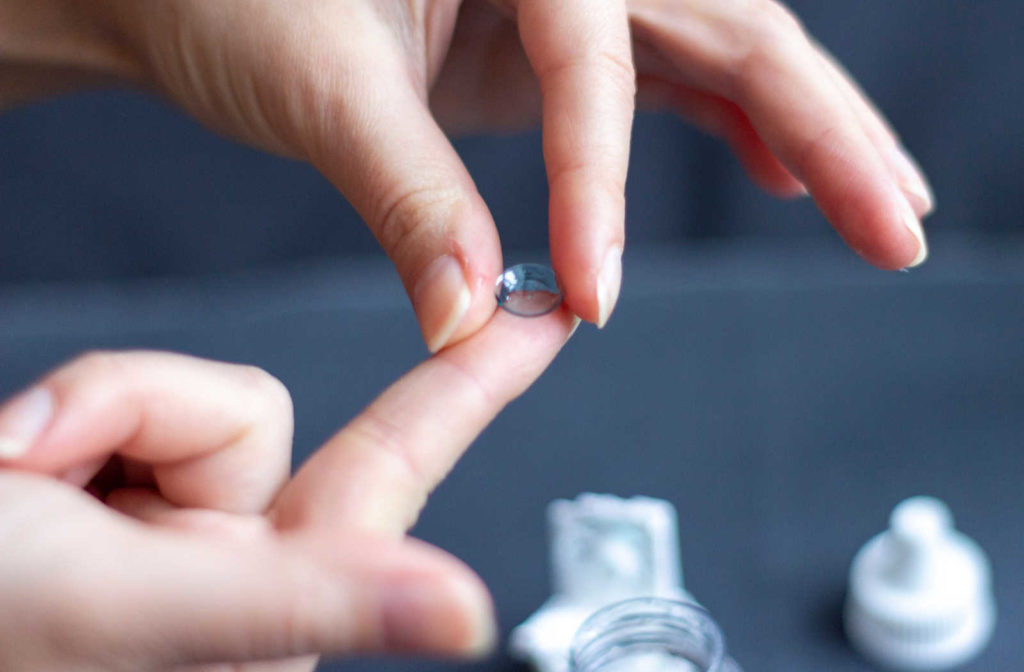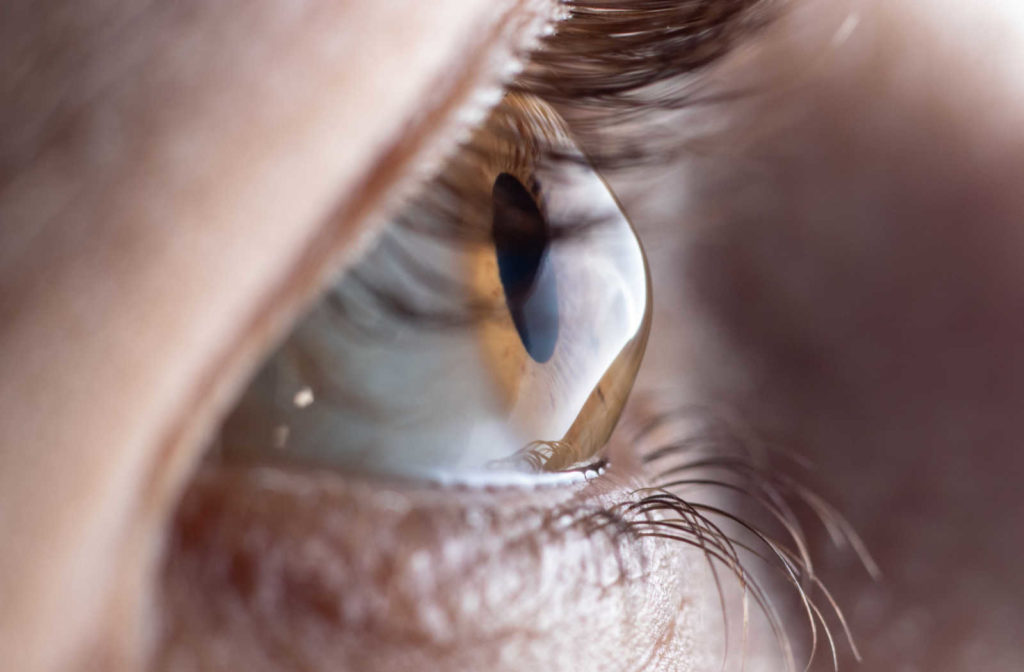Our eyes are by far the most important sense organs, and if our other senses, such as taste and smell, fail, it’s our eyes that protect us from danger. Because of this, any condition that jeopardizes eye health can cause alarm.
Keratoconus is a less common condition that can have serious consequences on your vision. It’s important to get regular eye exams to ensure that these types of conditions are caught as early as possible.
What is Keratoconus?
Keratoconus is defined by corneal thinning and irregularities on the cornea’s surface. The cornea is the clear, outer layer at the front of your eye. The middle layer of the cornea is the thickest and is mostly made of water and a protein called collagen.
Collagen strengthens and stretches the cornea, allowing it to maintain its regular, round shape. This healthy cornea concentrates light, allowing you to see clearly. Keratoconus causes vision loss by causing the cornea to thin and bulge into an irregular cone shape.
Doctors are unsure why people develop keratoconus. It appears to be genetic in some cases. One in every ten people with keratoconus has a parent who also has it. Keratoconus is also linked to:
- eye allergies
- excessive eye rubbing
- connective tissue disorders like Marfan syndrome and Ehlers-Danlos syndrome
Symptoms
Many keratoconus patients are completely unaware that they have the disease. The first symptom is a slight blurring or progressively poor vision that is difficult to correct.
Other keratoconus symptoms include:
- Glare and halos around lights
- Difficulty seeing at night
- Eye irritation or headaches associated with eye pain
- Increased sensitivity to bright light
- Sudden worsening or clouding of vision
Does Keratoconus Stop Progressing?
Keratoconus can appear between the ages of 10 and 25. It usually progresses slowly until about the age of 40. The disorder’s progression usually stops at this point, however, there are treatment options available to help manage the symptoms.

How to Treat Keratoconus
Treatment options for keratoconus will be determined by the severity of the condition and how quickly it progresses. Eyeglasses or contact lenses can be used to correct vision and corneal astigmatism in the early stages. As keratoconus progresses, other measures are often needed.
Soft Contact Lenses & Glasses
Eyeglasses or soft contact lenses can help correct vision distortion and astigmatism caused by keratoconus early on. Soft contact lenses can be custom-made to treat keratoconus, and they are precisely measured to your eyes and specifications.
To provide more stability in the eye, contact lenses designed to treat keratoconus are typically larger in diameter than traditional contact lenses.
Corneal Implants
If wearing contact lenses becomes unbearable, surgical procedures may be required. Corneal implants are rigid implants that can be placed in the stroma (the cornea’s thickest layer) to strengthen a specific area.
These procedures are only possible if the cornea is sufficiently thick. Most of the time, contact lenses or glasses are required in addition to the implants to allow good vision but not as strong as before the implants were placed.
Hard Contact Lenses
Rigid gas permeable contact lenses are frequently used to treat advanced keratoconus. Although hard lenses can be uncomfortable at first, many people adjust to them and they can provide excellent vision. This lens can be customized to fit your corneas.
Corneal Cross Linking
This procedure was officially FDA-approved in 2016, but it has been the preferred treatment for controlling keratoconus progression since its inception in 2003. Corneal cross-linking is an outpatient treatment for keratoconus that is minimally invasive, safe, and effective. It can slow the progression of the disorder and improve vision.
Corneal cross-linking is the process of creating links in the collagen fibers of your cornea using riboflavin and controlled ultraviolet light. This helps to flatten or stiffen your cornea, preventing it from bulging even more.
Corneal Transplant
If the condition has progressed to the point where none of the above options are likely to be successful, a corneal transplant is another option for people. If the cornea becomes scarred, swollen with fluid, or too thin and irregular, this procedure may be needed.
The goal of corneal transplantation is to replace the natural cornea of a patient with that of a donor. This should result in a clearer and less irregular cornea than before.
There are various surgical procedures available, such as full-thickness and partial-thickness transplants. It’s important to discuss these options with your surgeon because not all patients are candidates for these procedures.
Following surgery, this involves lengthy rehabilitation and may require additional procedures to optimize vision in the long run. At the very least, the sutures that hold the transplant in place must be removed many months after surgery. Contact lenses can be used to improve vision once the patient has healed.
Call Your Optometrist
If you are experiencing vision problems or have questions about your ocular health, please do not hesitate to contact our team at Perspective Eye Center today. We’re here to make sure you’re fully informed about your vision.



